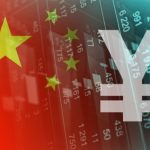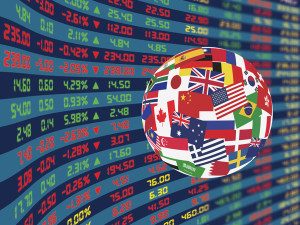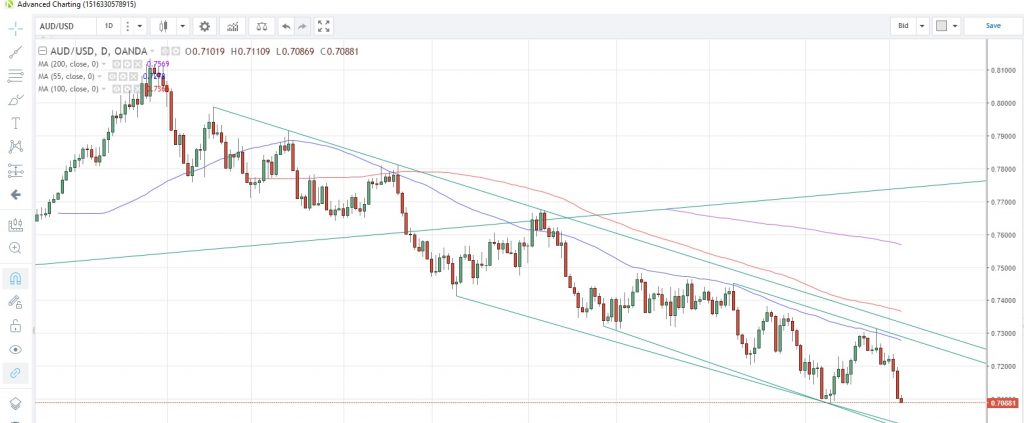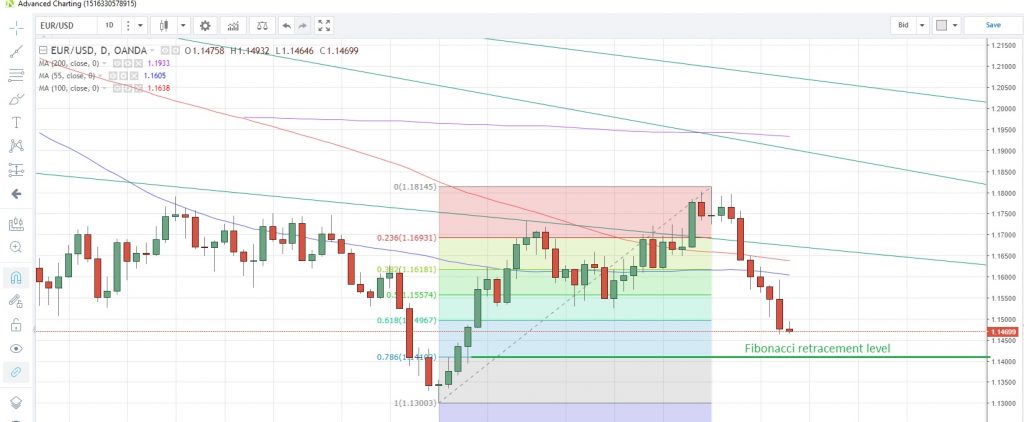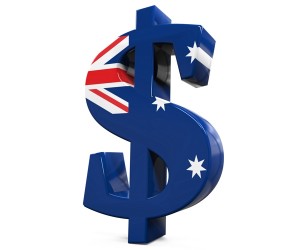
Markets Yield to pressure?
Not so far today as the markets have opened predictably quiet with Tokyo and New York celebrating their holidays. USDCNH is trading unpretentiously higher but the USD, in general, remain little-changed post-NFP. Strength in labour markets, and with wage growth picking up, it suggests the US versus the rest of the worlds 10-year interest rate differential will continue to widen out which should support the markets long USD bias all things being equal. However, in the absence of tier one US economic, outside of Thursday’s US CPI, the dollar won’t have much of in the way of strong US fundamentals data to anchor itself this week. EM focus is falling on Brazil elections where the Mexican peso will be used as a proxy to express a BRL view.
Non-Farm Payroll
I’m always a sucker for game-changer hype around Non-Farm Payroll reports, but even although the headline disappointed, the inline AHE didn’t, matching August’s gain. And with the rates markets looking to fade any disappointment, however, bond traders took their cue from the unemployment rate dropping to 3.7 per cent to boost 10-year UST yields to a seven-year high and leaving currency traders, who are speculatively long USD, to calmly go about their pre-US long weekend housekeeping duties relatively unfazed. However, U.S. stocks closed sharply lower as equity traders were left scrambling as surging US bond yields towered above the awe-inspiring 50-year low US unemployment rate.
Equity Markets
Stocks could trade lower again this week as portfolio rotation out of equities into fixed income accelerates which could negatively impact global markets. Blue chips have been trading pretty badly ever since US yields breached multi-year levels of resistance last Wednesday. Indeed, this ongoing carnage in the fixed income market combined with negative risk sentiment could shoot volatility through the roof forcing markets into a defensive posture
So, with Vix in the mix, we could see equity markets struggle as investors reduce risk.
The Kavanaugh Effect
Brett Kavanaugh, as was widely expected after Collins joined Flake as a yes Friday afternoon was appointed to the Supreme court. While this nod will have no market impact, it leaves the US no less divided ahead of what is expected to be firey and hotly contested midterm elections. After the Democrats’ red-hot all-out partisan attack on Kavanaugh last week, the Republican base has been invigorated while the tactics have backfired on the Democrats as according to IBD/TIPP poll Donald Trump’s approval ratings made a strong rebound.
China
China returns this week, and traders are keen to see how policymakers react to last weeks developments like the HSI’s sell-off triggered by the terrible China PMI prints, and the headline calamity around “Spy Chip” which put Chinese tech names under intense pressure. Indeed, it will be interesting to see how the markets pick up the pieces.
But if ‘ Spy -Chip fears continue to pick up, the US administration will go after China tech industry with guns blazing and blacklist them from US trade. The potential fall out from this battlefield would make the current tit for tat tariff war look like a game of axis and allies.
But the Pboc, not unexpectedly, jump started the process on Sunday by cutting the reserve requirement ratio for most commercial banks by one percentage point. The bank said would the net effect would inject Rmb750bn ($109bn) into the banking system to help spark growth to counter the adverse economic impact from US Tariffs and mainland’s deleveraging campaign but undoubtedly last weekend terrible PMI’s were a definite call to action. This monetary policy tweak is the fourth in 2018 and despite the weakening Yaun and the Feds embarking on a more aggressive rate hike tangent than expected, suggests the Pboc are putting their greatest energies behind stimulating the flagging economy as opposed to the US-China trade wars or Fed policy for that matter.
It’s not too much of a stretch to assume markets should expect more policy easing measures and increased infrastructure spending after China economy expanded at the slowest pace on record last month. The RRR cut will help but the China economy will more monetary policy persuasion to snap its current funk.
European Markets
Late Friday the EC rejected Italy’s budget outline according to the letter sent to Fin Min Tria.
Oil Markets
There was some mild profit taking on Brent future heading in the weekend, but the benchmark closed out a very explosive week up 1.44% from a week ago. WTI held a bit steadier on the day suggesting there were some positions adjustment back into the cheaper WTI benchmark ahead of this week’s set of US inventory numbers and closed the week out 1.5% higher than last week. Amid chatter that Saudi Arabia has replaced all of Irans lost oil.
Based on the dwindling spare capacity argument, the Oil rally is far from over. But the most significant issues is that no one seems to be able to pin down precisely how much OPEC spare capacity is. The state department, who is on the intervention warpath and quick to accuse OPEC of sitting on 1.4 million barrels daily(MB/d). But oil analysts quoted over the weekend “This is the lowest level of spare capacity in the global system relative to demand that I’ve ever seen. Spare capacity is moving to a precariously low point.” Jeffries. Frankly, OPEC’s spare capacity issue has been the oil markets biggest mystery for some time with most of that debate falling around mega-producer Saudi Arabia. But assuming additional capacity comes in at 2.5 MB/d as supported by the recent International Energy Agency data, the problem is that the capacity is quickly declining due to Asia’s insatiable demand.
Saudi Arabia claims it could produce 12. MB/d if it opened all the spigots. However, that claim has never been given the once over as the highest all-time level for Saudi output, according to OPEC report was just over 10.7 MB/d in 2016, only before the Saudi-Russia led mega OPEC cartel orchestrated push to raise oil prices via supply cuts.
But as the spare capacity debate rages on, so will focus on critical near-term demand indicators after the Energy Information Administration reported a considerable build in U.S. commercial oil inventories last week.
Some headwinds to greet markets this morning.
Reports over the weekend suggest the Trump administration will provide Iran waivers. But these wavier are not unconditional and are predicated on the countries weening off Iran crude 100 % compliant
Baker Hughes rig counts are down -2 as pipeline bottlenecks arrest supplies from the Permian Basin. But the bottlenecks don’t play out favourably for WTI given the pipeline constraints could lead to more significant inventory builds in Cushing, pressuring WTI lower and widening the Brent /WTI spread.
Finance ministers and central bankers head to Indonesia for the International Monetary Fund’s annual meeting, and officials have been dropping hints about trimming global growth forecast for the first time in two years.
Of course, the US economy keeps on ticking, but global synchronised growth has faded and should at some point provide a drag on oil demand. Higher oil prices will eventually lessen demand, but the multiplier effect from a weaker EM currency profile has a more significant impact. Most of the words rise in current as well as projected oil demand comes from EM countries, not from mature economies like the US and Europe where consumption is relatively stable.
Overcrowded trade and the ” porthole effect.”
The markets are still looking higher based on the dwindling global spare capacity narrative and by no means is this rally over. But as any futures trader will tell you, it can it can be hard for logic to prevail over emotion at times. The market is saturated with oil bulls, and in these grossly overbought conditions, it doesn’t take much to tip the apple cart. There’s nothing worse than that feeling realising that the excellent Oil position you have built, is similarly owned by everyone else in the markets. Knowing it would take little more than one bearish OPEC headline causing some prominent position to flinch, it could trigger an avalanche of traders running for the exits. It’s incredible how quickly prices can plummet when everyone’s running for the same door.
In oil markets, traders refer to this as the ” porthole effect ” (I wish I knew who coined the phrase as I would attribute) Basically it’s unclear if the boat is sinking or not by looking out of the “porthole”, but if one person tried to escape from the “porthole” a free for all would ensue.
Gold Markets
There remains a lot of risk in the markets, and there is a noticeably sick feeling in US equity markets which should support prices. But last weeks Treasury sell-off will undoubtedly motive gold bears so unless equity market spiral entirely out of control gold could track lower.
Currency Markets
I have been harping to no end about how tricky it could be to trade the US dollar over the next few weeks given that it’s a complete data dependent trade. Well, it hasn’t been that crafty at all as US yields are leading the way so far. However, this week the US economic data docket looks relatively sparse outside of Thursday key US CPI print. But, given the level of political noise in the market, in the absence of a busy slate of Tier one US economic data, there’s not much to keep the markets tethered to strong US fundamentals so that the US dollar could remain prone to external factors particularly from China and Italy. However, there are more FOMC tea leaves to read this week as a plethora of Fed members takes the stage to offer up their forecast for future policy. But after hearing Powell last week, and with Bostic even sounding less dovish than usual on Friday, I don’t think this week’s Fedspeak will offer too much of a protest to discourage the US Treasury sell-off, but shouldn’t move the dial significantly.
The Chinese Yuan
The Pboc’s RRR could jump-start the greenback on Monday as this policy measure, although widely expected by traders, should fuel additional easing talks and put more pressure on the RMB complex.
China’s foreign-currency holdings fell in September, as heightened trade tensions with the U.S. saw the USD safe haven appeal accelerated. However, the weakening Yaun could trigger waves of capital outflows leaving the Pboc with little choice to intervene to stem the tide
The Australian Dollar
How the US/China tensions unfold will be a primary focus this week, given how quickly relationship has fallen off the rails during the past week or two markets are getting very worried about the negative knock-on impact to Aussie dollar which is the primary G-10 currency to express China risk. This week RRR is a bit of a saw off for the Aussie. On the one hand, the weaker Yuan by proxy should feed negatively in the Aussie, but the stimulatory effects could benefit hard commodity prices and lend support to the Aussie
The Malaysian Ringgit
Higher US Treasury yields are dominating sentiment based on the markets hawkish FOMC view and weighing in EM currencies.
The external environment isn’t at all amicable for EM Asia currencies, higher US rates, tepid growth outside of the US markets, and the escalation of US-China tensions it’s near impossible to hold even the slightest of bullish conviction. Demand for MYR has been tepid at best With the upcoming budget in focus; it puts a lot of pressure on the Malaysia government to deliver a fiscally prudent measure. While terms of trade do remain favourably due to oil prices, slow domestic growth could be a real negative for the MYR as it could trigger a dovish response from the BNM.
Outsized negative sentiment in IDR and INR is feed through the basket, but the biggest concern is a faster pace of interest rate hikes in the US.















